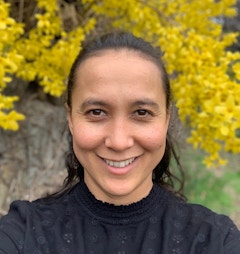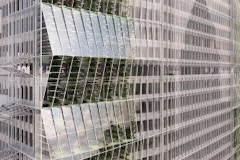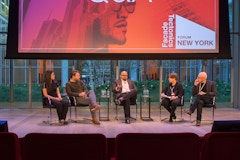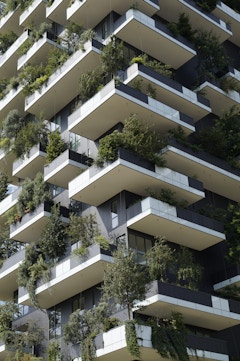
20 results
-

-

Fenestration Challenges
- Article by Helen Sanders, PhD
The May SKINS newsletter focuses on fenestration, that is – windows, curtainwall, storefront, glazed doors and skylights. There are very few structures that are built without these elements, not just because they are so crucial for occupant health and well-being.
-

Embodied Carbon
- Article by Helen Sanders
Welcome to this edition of the SKINS newsletter, which is all about carbon! As guest editor this month, I am representing FTI’s embodied carbon (EC) working group. This issue highlights several important topics relative to embodied and the trade-offs with operational carbon.
-

Bridging the Gap Between the Facade Industry and Diversity
- Article by Raditia Lasry, Administrative Assistant & Mindfulness Guide
This newsletter is different from what you usually expect from SKINS. We are talking about human connection, communication, language, and broadening our understanding of how we move through the world and evolve with the new information we receive. How do these aspects relate to the AECO Industry?
-

Exploring Heritage: Building on the Past
- Article by Mic Patterson
Welcome to this edition of the SKINS newsletter, which is all about carbon! As guest editor this month, I am representing FTI’s embodied carbon (EC) working group. This issue highlights several important topics relative to embodied and the trade-offs with operational carbon.
-

New Curtainwall Engineering Short-course for Architects and Engineers with 150 AIA CEU Credits
Augsburg University has announced a new curtainwall engineering compact program designed for the architect or engineer practicing internationally...
-
New Challenges – New Facades!
- Article by Ulrich Knaack
Being part of the European Façade Network efn, an association of ten research and education entities throughout Europe, I would like to share my experiences of last year’s conferences and research activities with this brief contribution.
-
-

A Break From The Past: How the Guggenheim Renovation Made Thermally Broken Steel Windows a New Normal
- Article by Angel Ayón, AIA, NCARB, NOMA, LEED AP, Principal
-

Drawdown: Paul Hawken Gets Real with Climate Change
- Article by Mic Patterson, PhD, LEED AP BD+C, Ambassador of Innovation and Collaboration
Drawdown is an inspiring new effort to manage atmospheric carbon and the resulting climate impacts. This brief reveiw discusses the book, the movement, and the potential.
-

Sustainababble: Moving beyond talk and taking action!
- Article by Mic Patterson, PhD, LEED AP+
Well, here we are well into the new year, for better or worse only time will tell. It seems that adversity fails to slow the clock; I don’t know about all of you, but certainly for me and others I’ve talked with time continues to flow at speed, perhaps even accelerating.
-

Jurors Select Winning Redesigns of 200 Park Avenue Facade
Metals in Construction magazine and the Ornamental Metal Institute of New York named six winning teams for its 2016 Design Challenge yesterday at the Times Center in New York City. “Reimagine a New York City Icon” challenged designers and engineers to reclad 200 Park Avenue in New York.
-

Addressing climate change through façade design - Vaclav Hasik
- Article by Vaclav Hasik
There is a growing awareness and interest in understanding the carbon footprint of material manufacturing, opening doors to new opportunities in facade design and manufacturing innovation. There are steps and decisions we can make today to help fight climate change.
-

Digital Designers in NYC Providing a Unique Facade Procurement Experience
- Article by Mic Patterson, PhD, LEED AP BD+C, Ambassador of Innovation and Collaboration
A small team of digital designers at the Schüco Virtual Construction Lab (VCL) in NYC is developing a new way for clients to experience and evaluate facade products. The VCL will be demonstrating the technology at the conference in Los Angeles on March 12-13.
-

RECAP – Facade Tectonics Forum: NYC! Expands and Amplifies the Better Buildings Dialogue
The recent Forum— Outside the Lines: Building Facades Redefine Urban Living in NYC —hosted by the Ornamental Metals Institute of New York was a rousing event that featured what is certainly among the best speaker programs ever organized by the Facade Tectonics Institute.
-

Printed Facades? Cases of Additive Manufacturing in the Building Envelope
- Article by Philipp L. Rosendahl · Chris Borg Costanzi · Philipp A. Chhadeh · Robert Akerboom · Benedikt Waldschmitt · Alexander Wolf · Marvin Kehl · Ulrich Knaack
This paper, written by a team at the Technical University at Darmstadt, uses examples of 3D printed structural glass, reinforced thin-sheet façade panels, and nesting bricks that can be integrated directly into facades to support work successful industrial applications.
-
RECAP – CTBUH 2015 Host Room Assembles World-Class Lineup of Building Facade Specialists
On October 26th and 27th, the Facade Tectonics Institute assembled a world-class lineup of building facade specialists at the CTBUH 2015 International Conference in New York City.
-

Facades Education in the Time of the Pandemic—Perhaps We Can Learn Something from This?
- Article by Ajla Aksamija, PhD, LEED AP BD+C, CDT
Ajla Aksamija, the chair of FTI’s education committee, reports on a virtual education experience bringing students and professionals together. The outcome exceeded all expectations and points to a new model for facades education.
-

Stop Relying on Myths – Energy Efficient and Durable Heritage Building Enclosures
- Article by David Kayll, FMA, P.Eng, President and senior building science specialist
-

